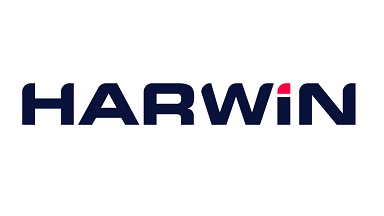Although the environmental factors already outlined are important, fatigue due to the number of mating cycles or problems with mis-mating are generally far less likely to be concerns in IIoT. Here, items of equipment may be difficult to get to or in very remote locations, being left for years without any human intervention. These items might be used for measuring the flow through a pipeline, checking the chemical composition output from a processing plant, or to monitor numerous other parameters.
Since they are not under ongoing human observation, IIoT nodes are, unfortunately, more at risk from vandalism and other types of malicious damage. In any of the examples just mentioned, where the equipment is situated outdoors, exposure to the elements (rain, snow, etc.) will need to be taken into account too. Also, if the IIoT network comprises a large number of nodes, then there will be a financial aspect to be aware of, as the total cost of each node will need to be as low as possible.
|

Figure 1: Examples of shrouded male and female connectors
|
When IIoT nodes are being used for monitoring purposes in a manufacturing or processing facility, there is a strong chance that they will be affected by the vibrations generated by nearby machinery. Such vibrations are unavoidable in many industrial settings, and in some cases the IIoT node may actually be drawing on them as a power source (via energy harvesting). Vibrational forces can potentially cause the mating surfaces of a connector’s contacts/sockets to become temporarily disconnected from one another, unless appropriate measures are taken to prevent this. Sockets with multiple points of contact are usually the best choice in such situations.
It is advisable to source connectors that have been tested to an industry-recognized standard (such as EIA-364-28D, condition IV). This requires mated connector components to exhibit no electrical discontinuity within a 12-hour testing period while being subjected to vibration frequencies cycling from 10Hz all the way up to 2000Hz, over an amplitude of 1.52mm. The acceleration experienced by the connectors will be 196m/s² (which equates to 20G).
Connectors deployed in harsh industrial environments must also be resilient to physical wear and tear. It should be noted that IIoT does not necessarily just cover stationary nodes. In some interpretations it can include robots and automated guided vehicles (AGVs) too. Here, regular mating might be needed (to execute firmware updates, download acquired data, or simply for recharging purposes). Appropriate mechanisms will then be essential to ensure prolonged mating integrity. It is recommended that both male and female connectors have fully shrouded contacts, in mated and unmated configurations. Designs that have the ends of the contacts recessed behind the front face are often the best, as anything placed on the top surface will not touch the contacts.
|

Figure 2: A connector with surface-mount hold-downs incorporated
|
When soldering to the PCB, it is always worth specifying male and female connectors where surface-mount hold-downs are fitted for strain relief. These features will add to the area of surface-mount pads soldered to the PCB. Consequently, the force required to pull a connector off the board will be increased substantially. It is critical that the soldering method employed provides strong surface-mount solder connections to these hold-downs as well as to the contacts themselves.
Whether IIoT hardware is situated inside a factory building (where machinery could be giving off a lot of heat), or deployed out in the field (where day/night temperatures vary significantly), the selected connectors should support a wide operational temperature range – far beyond the requirements of a standard commercial connector. Depending on the application, it may be necessary to specify interconnect components that can cope with -55°C to +125°C. Thermal shock testing to EIA-364-32C Condition III might also be applicable. Here cycling between these temperatures is carried out 10 times, with 30 minutes being spent at each extreme. Testing via EIA-364-17B, Method A could also be appropriate, which subjects the connectors to 125°C for a period of 96 hours.
Introducing Archer Kontrol from Harwin
Given there are so many different variables involved, selecting the optimal connector for any IIoT application is certain to prove difficult. Before looking to specify a connector for an application it is important to have a good understanding of what criteria needs addressing – both from an electrical and an environmental perspective. Once the specifications required have been defined, then it is a matter of searching through the available connector offerings in order to find one that fits these requirements.
Robust, yet cost effective, Harwin’s Archer Kontrol 1.27mm pitch connector series has been developed explicitly for industrial deployment and is already seeing uptake in a multitude of IIoT applications. These high-density, stackable connectors are capable of supporting the 3Gbps data rates that next generation industrial automation networking infrastructure will expect. 12 to 80 contacts can be accommodated, with all board-to-board configurations (parallel, edge-to-edge and right angle) supported. Archer Kontrol connectors have a 1000MΩ (minimum) insulation resistance and a 55°C to 125°C operational temperature range. Their fully shrouded design protects them against potential contact damage. All things considered, they are the go-to choice for demanding industrial applications.






